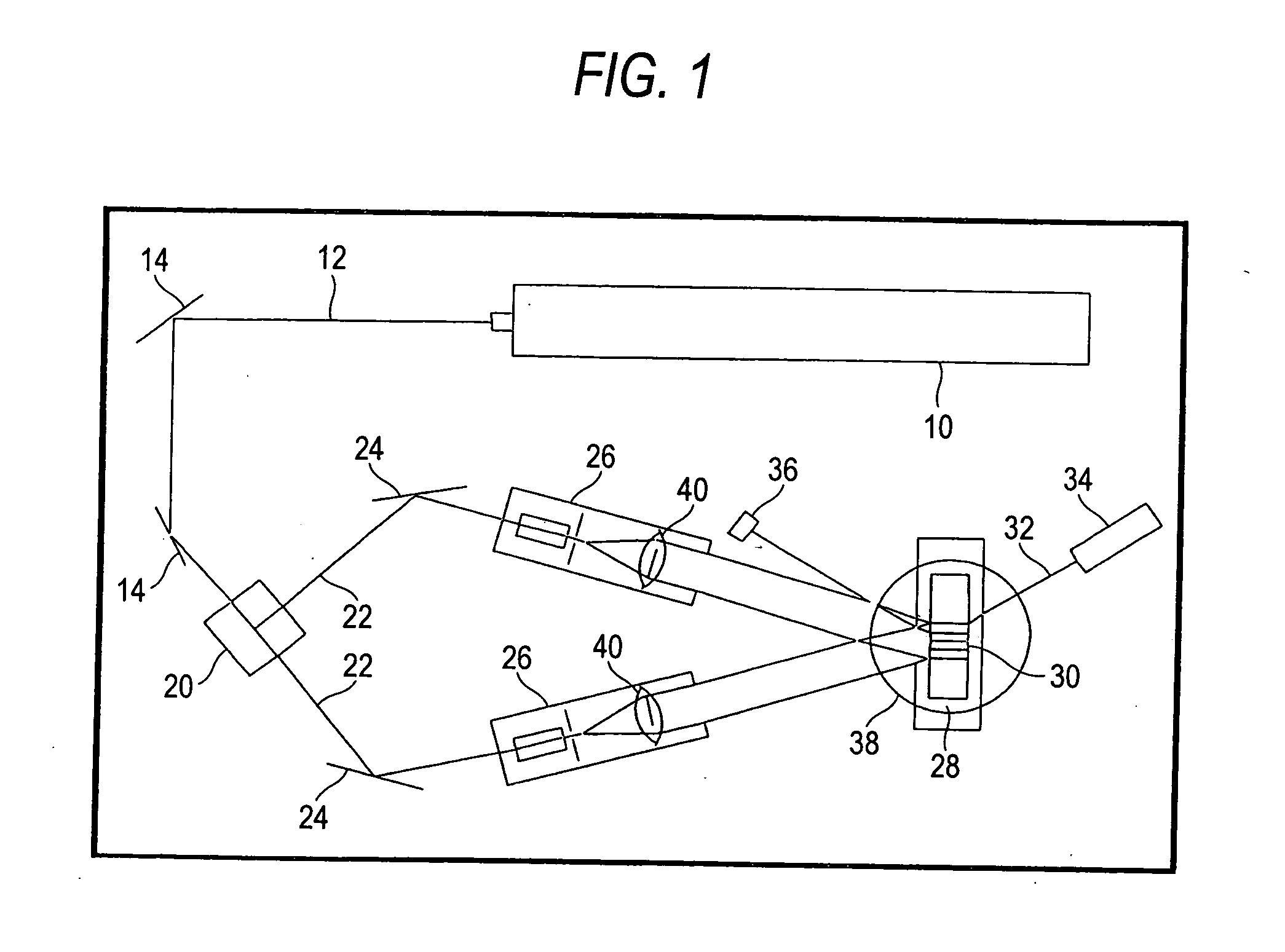Hologram recording material composition, hologram recording material and hologram recording method
a technology of hologram and recording material, which is applied in the direction of optical recording/reproducing/erasing methods, photomechanical instruments, instruments, etc., can solve the problems of difficult availability of surface relief phase holograms in the form, the efficiency of light beam use is difficult to achieve, and the amplification-type hologram undergoes a drastic reduction in light diffraction efficiency or reflection efficiency. , to achieve the effect of linear rise of refractive index modulation,
- Summary
- Abstract
- Description
- Claims
- Application Information
AI Technical Summary
Benefits of technology
Problems solved by technology
Method used
Image
Examples
example 1
Under a red light, a sensitizing dye, an electron donating compound, an interference fringe recording component, an additive and a binder PMMA-EA (polymethyl methacrylate-5% ethyl acrylate copolymer, Mw: 101,000) shown in Table 1 were dissolved in methylene chloride of 2 to 4 times amount (acetone or acetonitrile being also employed if necessary) to obtain compositions A101-A110 for hologram recording material.
Percentages are shown in wt. % with respect to the binder PMMA-EA.
TABLE 1I-101I-102I-103R-7R-3ED-1SO-1SO-2SO-3ElectronSensitizingdonatingInterference fringeSampledyecompd.recording componentAdditiveA101D-91 4%—I-103 50% + R-3 10%SO-1 8%A102D-95 8%—I-103 50% + R-3 10%SO-1 8%A103D-95 4%ED-1 36%I-103 50% + R-3 10%—A104D-101 30%—I-103 50% + R-3 10%SO-2 36%A105D-107 30%—I-103 50% + R-3 10%SO-2 36%A106D-115 0.5%ED-1 42%I-103 50% + R-3 10%SO-3 8%A107D-118 1.6%ED-1 42%I-103 50% + R-3 10%SO-3 8%A108D-117ED-1 42%PB-3 20% + DD-47 10%—0.84%A109D-118 1.6%ED-1 42%E-12 25%trioctylamine ...
example 2
Under a red light, a sensitizing dye, an electron donating compound, an interference fringe recording component, an additive and a binder PMMA-EA (polymethyl methacrylate-5% ethyl acrylate copolymer, Mw: 101,000) shown in Table 3 were dissolved in methylene chloride of 2 to 4 times amount (acetone or acetonitrile being also employed if necessary) to obtain compositions B101-B104 for hologram recording material.
Percentages are shown in wt. % with respect to the binder PMMA-EA.
TABLE 3R-7R-3I-101I-102I-103I-104ED-1SO-3ElectronSensitiz-donatingInterference fringeSampleing dyecompd.recording componentAdditiveB101D-115ED-1 42%I-104 50% + R-3 10%SO-3 8%0.5%B102D-118ED-1 42%I-104 50% + R-3 10%SO-3 8%1.6%B103D-117ED-1 42%PB-3 20% + DD-47 10%—0.84%B104D-118ED-1 42%E-12 25%trioctylamine1.6%10%
Each of the compositions B101-B104 for the hologram recording material was blade coated on a glass substrate (superposed coating if necessary) to obtain a thickness of about 80 μm to form a photosen...
PUM
 Login to View More
Login to View More Abstract
Description
Claims
Application Information
 Login to View More
Login to View More - R&D
- Intellectual Property
- Life Sciences
- Materials
- Tech Scout
- Unparalleled Data Quality
- Higher Quality Content
- 60% Fewer Hallucinations
Browse by: Latest US Patents, China's latest patents, Technical Efficacy Thesaurus, Application Domain, Technology Topic, Popular Technical Reports.
© 2025 PatSnap. All rights reserved.Legal|Privacy policy|Modern Slavery Act Transparency Statement|Sitemap|About US| Contact US: help@patsnap.com



